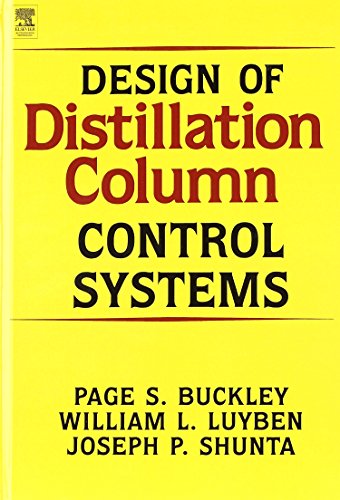
Inhaltsangabe
A distillation column is both multivariable and nonlinear - and it consumes immense quantities of energy. Yet, despite the desigh challenges it presents, it is still the most popular unit operation for refining in industrial plants today. Much has been published on the subject of distillation column design, but much remains to be explained. That is why this book is unique. In a departure from the more traditional empirical and theoretical approaches, it introduced the reader to the practical realm, by presenting quantitative design techniques that have been demonstrated to be useful and valid over the course of hundreds of actual applications. The book is divided into three main parts. Part I, an introduction, presents an industrial perspective of control objectives. It discusses briefly the relationship between column design features and column controllability. It thus provides a short refresher course for chemical engineers and background for those trained in other branches of engineering. Part II, Concepts and Configurations, discusses column overhead and base arrangements, typical control schemes, and some hardware considerations. Part III is dedicated to quantitative design. Mathematical models are presented for pressure and differential pressure controls, liquid level control, and composition control of binary distillation.
Die Inhaltsangabe kann sich auf eine andere Ausgabe dieses Titels beziehen.
Reseña del editor
A distillation column is both multivariable and nonlinear - and it consumes immense quantities of energy. Yet, despite the desigh challenges it presents, it is still the most popular unit operation for refining in industrial plants today. Much has been published on the subject of distillation column design, but much remains to be explained. That is why this book is unique. In a departure from the more traditional empirical and theoretical approaches, it introduced the reader to the practical realm, by presenting quantitative design techniques that have been demonstrated to be useful and valid over the course of hundreds of actual applications.
The book is divided into three main parts. Part I, an introduction, presents an industrial perspective of control objectives. It discusses briefly the relationship between column design features and column controllability. It thus provides a short refresher course for chemical engineers and background for those trained in other branches of engineering. Part II, Concepts and Configurations, discusses column overhead and base arrangements, typical control schemes, and some hardware considerations. Part III is dedicated to quantitative design. Mathematical models are presented for pressure and differential pressure controls, liquid level control, and composition control of binary distillation.
- Emphasis on topics of primary interest to the control engineer
- Essentially nonmathematical treatment
- Ideal for those involved in troubleshooting existing columns as well to design engineers
„Über diesen Titel“ kann sich auf eine andere Ausgabe dieses Titels beziehen.
Weitere beliebte Ausgaben desselben Titels
Suchergebnisse für Design of Distillation Column Control Systems
Design of Distillation Column Control Systems
Anbieter: Chiron Media, Wallingford, Vereinigtes Königreich
Hardcover. Zustand: New. Bestandsnummer des Verkäufers 6666-ELS-9780713135510
Neu kaufen
Anzahl: Mehr als 20 verfügbar
DESIGN DISTILLATION COL CONTROL SYS
Print-on-DemandAnbieter: Brook Bookstore On Demand, Napoli, NA, Italien
Zustand: new. Questo è un articolo print on demand. Bestandsnummer des Verkäufers 856972d71ee09d4382986a2ee8dc554d
Neu kaufen
Anzahl: Mehr als 20 verfügbar
Design of Distillation Column Control Systems
Anbieter: Majestic Books, Hounslow, Vereinigtes Königreich
Zustand: New. pp. 576. Bestandsnummer des Verkäufers 7362583
Neu kaufen
Anzahl: 3 verfügbar
Design of Distillation Column Control Systems
Anbieter: Revaluation Books, Exeter, Vereinigtes Königreich
Hardcover. Zustand: Brand New. 1st edition. 576 pages. 10.00x7.00x1.50 inches. In Stock. Bestandsnummer des Verkäufers __0713135514
Neu kaufen
Anzahl: 2 verfügbar
Design of Distillation Column Control Systems
Anbieter: Books Puddle, New York, NY, USA
Zustand: New. pp. 576. Bestandsnummer des Verkäufers 26518088
Design of Distillation Column Control Systems
Anbieter: Biblios, Frankfurt am main, HESSE, Deutschland
Zustand: New. pp. 576. Bestandsnummer des Verkäufers 18518082
Neu kaufen
Anzahl: 3 verfügbar

